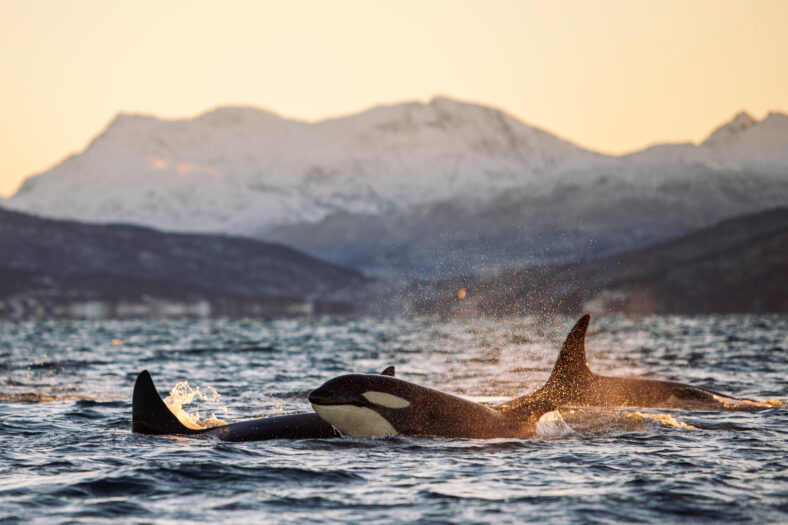These Orcas Developed A Strategy To Hunt Whale Sharks

Off the coast of Mexico, a gang of orcas led by a large adult male have learned how to hunt whale sharks, which are the largest species of shark in the world.
According to the National Ocean Service, whale sharks can weigh up to 40 tons and grow more than 40 feet long. In comparison, orcas, also known as killer whales, only reach up to 32 feet.
Some smaller and younger whale sharks feed at sites in the Gulf of California, making them vulnerable to predation.
Orcas have been hunting whale sharks of a smaller size in four separate hunting events. One male individual was present at three of the events, suggesting that he was behind the predatory behavior.
The predation events occurred between 2018 and 2024 in the southern Gulf of California. They were captured in images and video footage.
Scientists analyzed the photographs of dorsal fins and other distinctive features to differentiate between individual orcas.
“We show how orcas displayed a collaboratively hunting technique on whale sharks, characterized by focusing on attacking the pelvic area, causing the whale shark to bleed out and allow orcas access to the lipid-rich liver,” said Erick Higuera Rivas, the senior author of the study and a marine biologist at Conexiones Terramar.
The orcas struck the whale sharks at high speeds to disorient them and flip them upside down. When the sharks were in this position, they were unable to swim or dive into deeper waters.
Then, the orcas attacked the pelvic areas of the whale sharks to reach the livers, which are of great nutritional importance for them.

Sign up for Chip Chick’s newsletter and get stories like this delivered to your inbox.
The researchers never actually saw the orcas consuming the livers, but they know that the organs are a favorite delicacy among other orca pods.
The orcas may be targeting the ventral side of whale sharks because that is where their bodies have the least protection. There is less muscle and cartilage in that area.
A male orca named Moctezuma participated in three of the four hunting events. A group of females carried out the fourth hunting event.
They had been spotted with Moctezuma before, suggesting that he had been teaching the hunting strategies to other members of the pod.
Orcas in other regions may have developed these special skills as well, but evidence is limited. It is unclear whether this is a new behavior or something that has been going on for a while but has managed to remain undetected until now.
The discovery of a pod that hunts whale sharks in the Gulf of California has a number of implications. For instance, there is now a greater need to manage marine adventurers and tourists to ensure their safety. Also, if this specific prey disappears due to climate change in the region, the orcas could be at risk.
“It is very impressive how orcas work together strategically and intelligently to access only a very specific area of the prey. It highlights what great predators they are,” said Higuera Rivas.
More About:Animals





